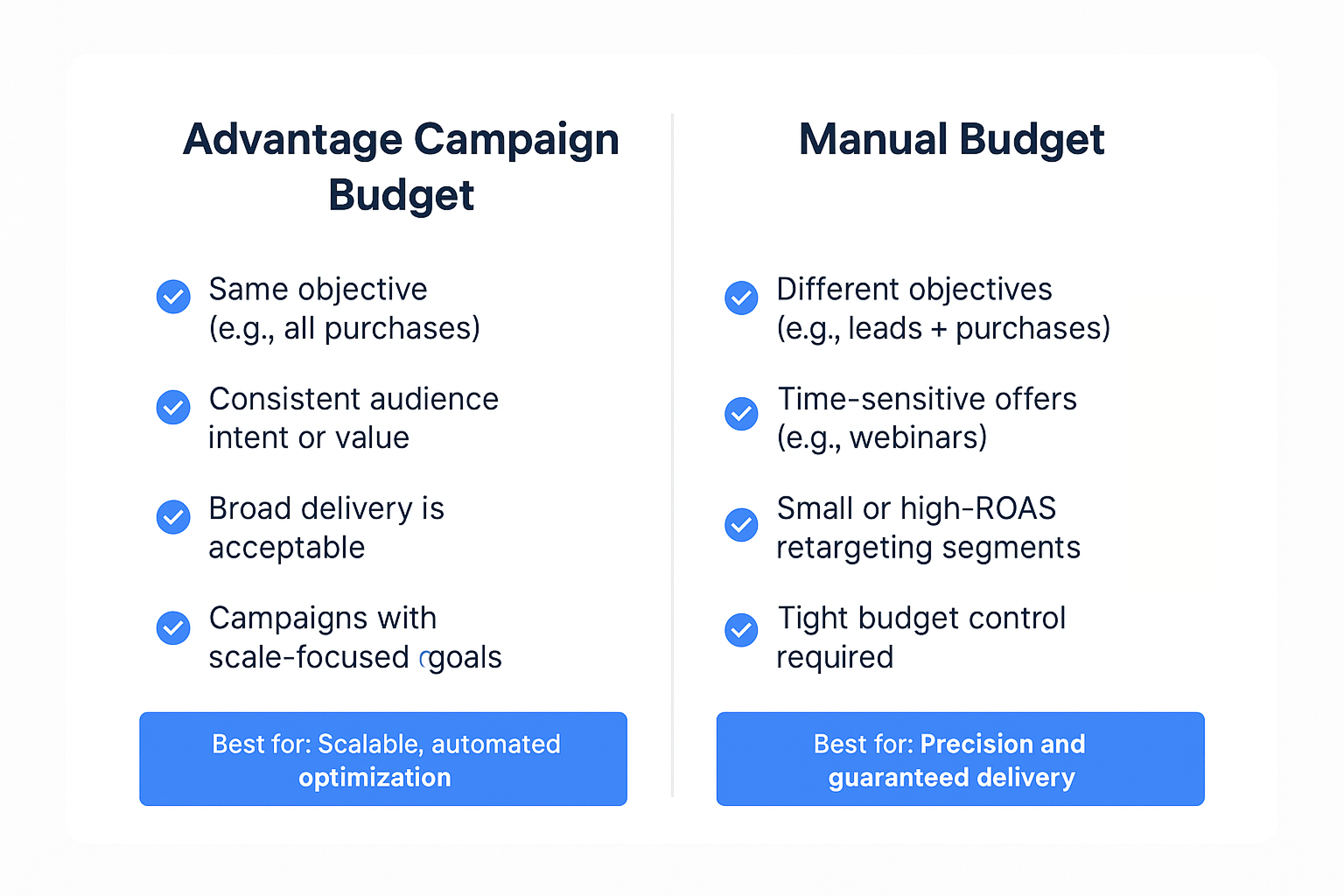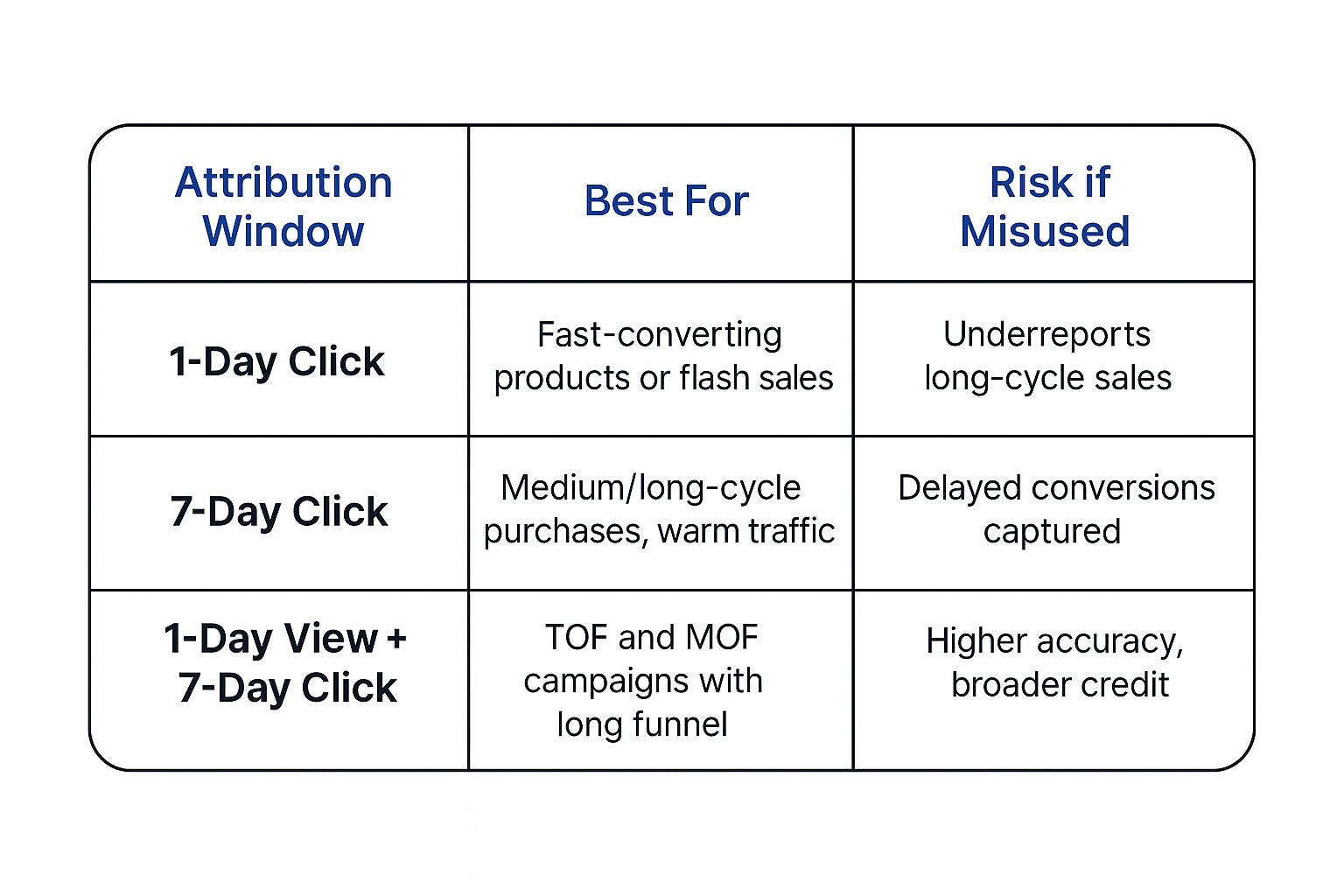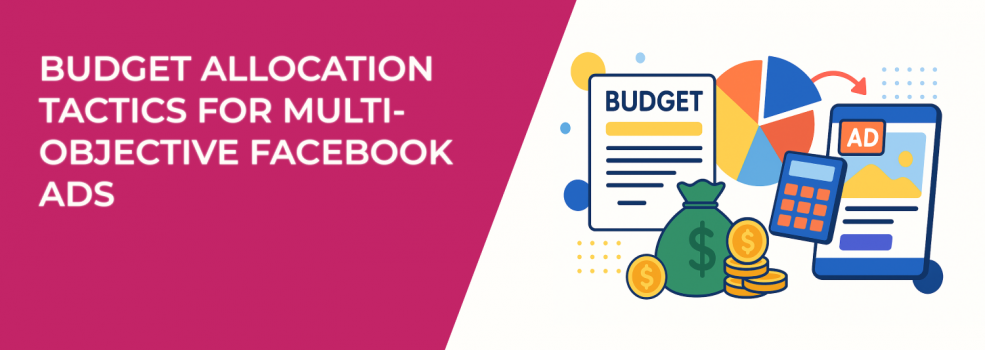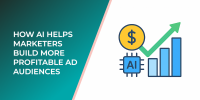Running Meta (Facebook) ads with one objective can be challenging. Running them with multiple? That’s where things start to break down — especially if your budget strategy is unclear.
Advertisers today are juggling awareness, lead gen, purchases, retargeting, and more. And without a proper budget allocation plan, most end up overfunding cheap clicks while starving the ads that actually drive revenue.
This article breaks down how to allocate your Facebook ad budget across multiple campaign objectives. You’ll learn how to use Advantage Campaign Budget effectively, when to go manual, and how to align spend with actual business outcomes — not vanity metrics.
Why Multi-Objective Campaigns Burn Through Budget So Fast
Meta’s algorithm is designed to optimize toward a single, clear objective. When you try to mix several — like reach, leads, and purchases — in one campaign, the system doesn’t know what to prioritize.
Here’s what usually happens:
-
Facebook over-delivers to the lowest-cost event (like video views).
-
Higher-value actions (like purchases) get less budget.
-
Campaigns stall or never exit the learning phase.
This isn’t a spending issue. It’s a structure issue. Your campaign architecture needs to support your objectives — and your budget should be allocated to support your strategy.
If your campaigns are getting stuck or showing the “learning limited” warning, this might be why. Here’s a practical read on why your ad set may get zero delivery — and how to fix it.
1. Map Objectives to Funnel Stages — Then Assign Budget
The most effective way to structure your Facebook ad budget is to align it with your funnel. Each objective should support a specific stage of the customer journey — from building awareness to driving conversions.
Here’s how to break it down:
Top-of-Funnel (TOF)
Goal: Reach new audiences and introduce your brand.
Use when: You’re building visibility, launching a new product, or warming up cold traffic.
Relevant Meta objectives:
-
Awareness — Reach people likely to remember your brand.
-
Engagement — Generate interest through likes, comments, shares, or video views.
-
Traffic — Send users to your site, app, or content hub to learn more.
Common legacy objectives mapped here:
-
Brand awareness
-
Reach
-
Video views
-
Store traffic
-
Page engagement
Mid-Funnel (MOF)
Goal: Nurture interest, build intent, and capture leads.
Use when: You want users to engage deeper or share contact info.
Relevant Meta objectives:
-
Leads — Collect sign-ups, calls, or form fills.
-
Engagement — Spark conversations via DMs or comments.
-
Traffic — Drive to landing pages, product detail pages, or quizzes.
Common legacy objectives mapped here:
-
Lead generation
-
Messages
-
Engagement
-
Website traffic
-
Initiate checkout
Bottom-of-Funnel (BOF)
Goal: Convert high-intent users into customers.
Use when: You're retargeting warm audiences or driving direct response.
Relevant Meta objectives:
-
Sales — Optimize for purchases, adds to cart, or other revenue events.
-
Leads — When the lead is a high-value action like booking a demo or consultation.
-
App Promotion — For in-app purchases or user activation events.
Common legacy objectives mapped here:
-
Conversions
-
Catalogue sales
-
App installs
-
Sign-ups
-
Bookings
Once you’ve grouped your campaigns by funnel stage, budget allocation becomes more strategic. Don’t spread spend evenly by default — allocate based on funnel bottlenecks. For example, if you're getting strong traffic but low sales, shift more budget into BOF.
If you're not sure which Meta objective to choose for your goal, this breakdown of Meta Ad Campaign Objectives walks you through how each one works and when to use it.
2. Use Advantage Campaign Budget — But Structure Campaigns Carefully
Advantage Campaign Budget automatically distributes your campaign budget across ad sets based on performance. But it only works when your campaign is structured correctly.

Use Advantage Campaign Budget when:
-
All ad sets have the same goal, such as purchases or leads.
-
Audiences have similar intent or value.
-
You want Facebook to prioritize top-performing ad sets in real time.
Avoid using it when:
-
Your ad sets contain different objectives.
-
You’re testing unrelated audiences (e.g., cold vs. hot traffic).
-
You have a limited audience size and need precise control.
To avoid wasted spend, keep your campaigns focused. Don't force Meta to choose between conflicting goals — give it one job and the right tools to do it.
Need a deeper dive? Here’s how to optimize Advantage Campaign Budget for scalable Facebook Ads with examples of proper structure and when to use manual overrides.
3. Use Manual Budgets for Time-Sensitive or High-Stakes Campaigns
Advantage Campaign Budget works best for broad optimization. But some campaigns require guaranteed delivery — and that means setting budgets manually at the ad set level.
Use manual budget allocation when:
-
You have time-sensitive offers, such as event promotions or limited sales.
-
You're running BOF campaigns that need guaranteed exposure.
-
You want to ensure a minimum spend on warm audiences or high-performing creatives.
Manual budgets offer tighter control and help prevent Facebook from underfunding critical campaigns — especially those with high ROAS potential but smaller audience sizes.
If you're managing multiple campaigns or clients, you'll find this guide on how to manage Facebook ad budgets across campaigns helpful for tracking spend and maintaining control.
4. Test Budget Splits — Not Just Audiences and Creatives
Advertisers routinely test new creatives, headlines, and audiences. But very few experiment with budget distribution across the funnel. That’s a missed opportunity.
Here are a few common budget models to test:
-
Brand-first model: 70% TOFU, 20% MOFU, 10% BOFU.
-
Balanced growth model: 40% TOFU, 30% MOFU, 30% BOFU.
-
Conversion-heavy model: 20% TOFU, 30% MOFU, 50% BOFU.
Each one supports different business goals. A brand-first model is ideal for product launches. A conversion-heavy model is best for high-LTV audiences and short funnels.
Testing this requires disciplined campaign structure. If you’re not sure where to start, check out Daily Budget vs Campaign Budget Optimization for pros and cons of each approach.
5. Match Attribution Windows to the Real Sales Cycle
A frequent mistake in Facebook budget planning is using an attribution window that doesn’t match your actual sales timeline. That leads to underreporting — and underfunding — campaigns that are doing more than you think.

Use longer attribution windows when:
-
Your product has a high consideration period.
-
You’re selling to cold audiences.
-
Sales typically happen over 5–10 days, not instantly.
Recommendations:
-
For TOF and MOF campaigns, use 7-day click or 1-day view + 7-day click.
-
For fast-converting products, 1-day click can still work — but compare results over multiple windows.
-
Use UTM parameters and tools like Google Analytics, Hyros, or Triple Whale to verify performance.
Matching attribution to your sales cycle ensures you’re not making budget decisions based on incomplete data. When attribution windows are too short, you risk cutting high-performing campaigns that just need more time to show results.
6. Segment Audiences by Value — and Allocate Budget Strategically
Not every click or conversion is equal. When you have limited budget, you want it focused on the audiences most likely to deliver value.
Ways to segment by value:
-
High-LTV buyers: Use customer lifetime value data to create lookalikes.
-
Behavior-based groups: Retarget past purchasers, cart abandoners, or highly engaged users.
-
Exclusions: Filter out recent buyers or unqualified leads from TOF campaigns.
Once segmented, allocate more budget to high-intent and high-value audiences. While their CPMs or CPAs might be higher, the returns are typically stronger and more consistent.
If you’re unsure how to build these segments, read Facebook Ad Targeting 101 — it covers the fundamentals and advanced options.
7. Review Budget Allocation Weekly — Not Monthly
Meta campaign performance shifts fast. A winning campaign on Monday might start fading by Thursday — especially if audience size is small or creative is fatiguing.
Review weekly:
-
Spend by campaign and funnel stage.
-
CPA, ROAS, and conversion volume trends.
-
Underperforming campaigns still getting significant spend.
-
Campaigns that are stuck in learning with low delivery.
Don’t wait until results crash. Proactive audits save money and improve performance. If you’re stuck with stalled performance, read Facebook Ads Not Converting: How to Fix It.
Final Takeaway: Budget Allocation Is Where Strategy Meets Results
Campaign structure, creative, targeting — they all matter. But without smart budget allocation, even the best campaigns struggle to scale profitably.
Here’s the bottom line:
-
Use Advantage Campaign Budget when your structure supports it.
-
Go manual when control is more important than flexibility.
-
Match budget to real performance, not just campaign names or past habits.
-
Test your budget splits just like you test ads — and adjust fast when results change.
Great Facebook advertisers don’t just spend — they spend intentionally. Treat your budget like a strategic tool, not a static setting, and you’ll see better returns across every stage of your funnel.

